|
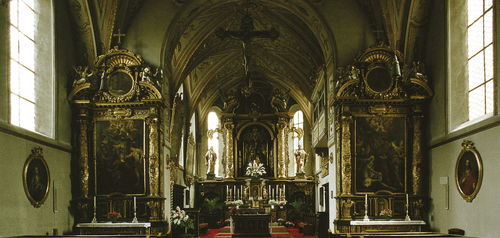
St Maria in Ramersdorf
|
Visitors should view church interiors only when no services are taking place.
|
|
|
Artists buried in St
Georg’s cemetery include Liesl Karstadt, Erich Kästner, Oskar Maria
Graf, Rainer Werner Fassbinder, and others.
|
|
Frauenkirche Munich’s 15th-century cathedral dominates the city silhouette with its twin .
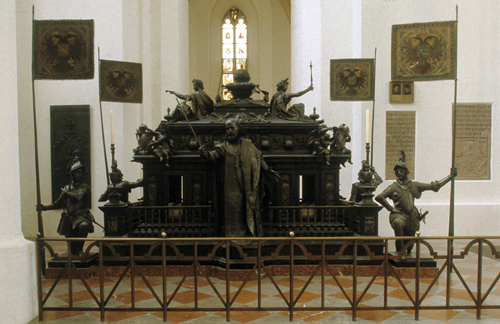
Emperor’s tomb, Frauenkirche
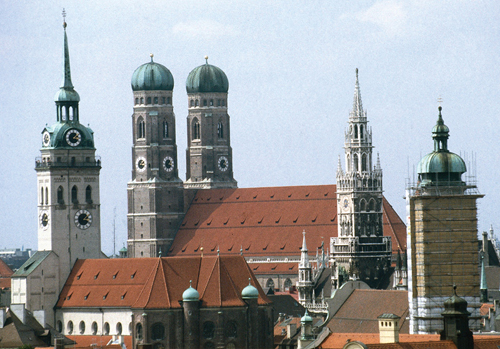
Frauenkirch
Asamkirche Dedicated
to St Johann-Nepomuk, this late Baroque church built by the Asam
brothers features ceiling frescoes depicting the saint .

Putto, Asamkirche
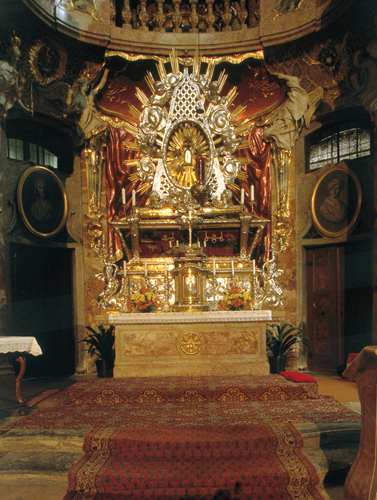
High altar, Asamkirche
Peterskirche (Old Peter) Although
this is the oldest parish church in the city (13th century), the
interior is a mix of Gothic (altar by Schrenk), Baroque (baptismal
font), and Rococo (side altars). Climbing the 302 steps to the top of
the Renaissance tower is worth the effort .
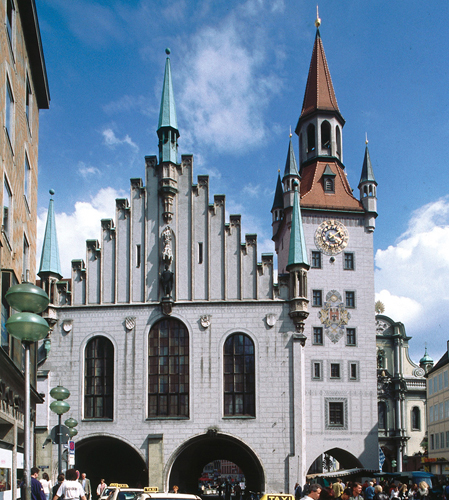
Ludwigskirche Friedrich
von Gärtner built this church, which is flanked by two towers, in the
style of Italian Romanesque (1829–43). The glorious fresco Judgement Day
by Peter von Cornelius is the second-largest church fresco in the
world. Ludwigstr. 20 7:30am–8pm daily
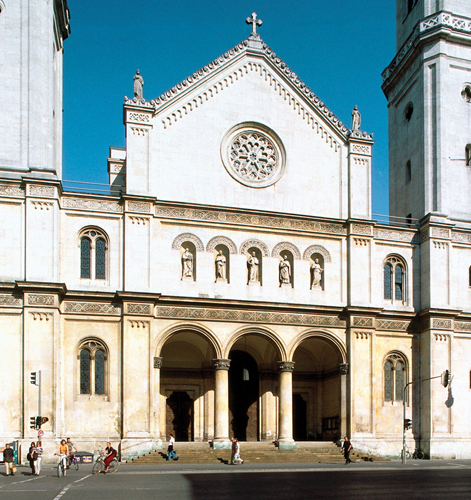
The Romanesque-Byzantine Ludwigskirche
Michaelskirche An
important structure in many ways, this is the largest late Renaissance
church north of the Alps. Construction began in 1583. It features the
second-largest barrel vault in the world, after St Peter’s in Rome, and
was built for the Jesuits. The crypt contains the sarcophagi of Elector
Maximilian I and Ludwig II. Not to be missed is the bronze figure of St
Michael battling the dragon (1585). Neuhauser Str. 6 Open 7am–9pm daily
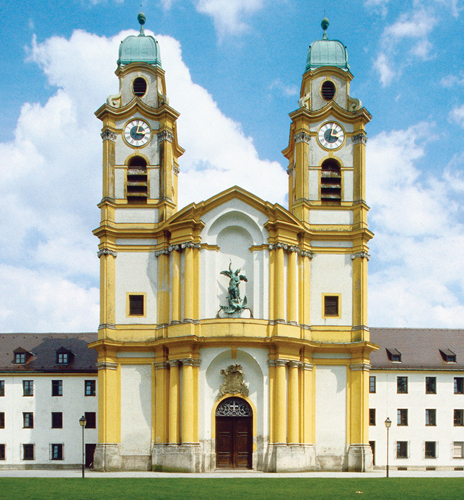
Theatinerkirche Construction
of this church, which is also called St Cajetan, was begun in 1663 to
mark the birth of the heir to Elector Ferdinand. It is the most
Italianate of all Munich’s churches.
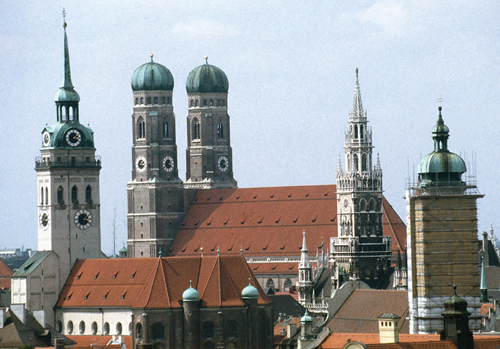
Klosterkirche St Anna The
Lehel district is home to Munich’s earliest Rococo church, built by
Johann Michael Fischer from 1727 to 1733, with an interior designed by
the Asam brothers. Construction of the nearby neo-Romanesque parish
church of St Anna began in 1887.
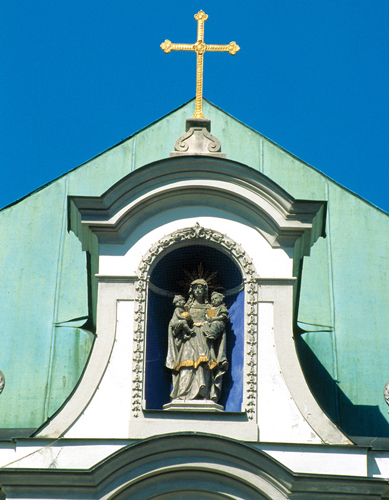
Heiliggeistkirche The
beginning of the 13th century saw the creation of a hospital church at
this site, followed in 1392 by a Gothic basilica. In 1724, the existing
structure was remodelled in the Baroque style. The interior is
characterized by a blend of Gothic and late Baroque. Stucco work is by
the Asam brothers. Damenstift St Anna St
Anna was originally a monastery of Sisters of the Salesian Order.
Today, it is a school. he façade and interior of this late Baroque
church were designed in the 18th century by the Asam brothers. Frescoes
destroyed in World War II have been reconstructed in sepia. Damenstiftstr. 1 Open 8am–8pm daily
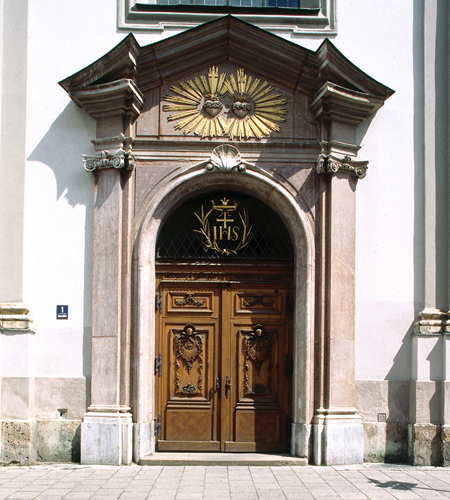
Ohel Jakob Synagogue Munich’s
new main synagogue was inaugurated in 2006, 68 years after Hitler
ordered the destruction of its predecessor. An imposing stone structure,
with a raised glass roof, it is part of the recently opened Jewish
Centre on St-Jakobs-Platz .
Top 10 Other Houses of Worship
Dreifaltigkeitskirche Late Baroque church (1711–16) with Asam ceiling fresco. Salvatorkirche Cemetery church adjoining the Frauenkirche (1494) in Bavarian brick Gothic. Greek-Orthodox. St Paul’s Basilica with twin-tower enclosure and domed tower in Rhineland Gothic (1892–1906). St Bonifaz Benedictine church and abbey (1835–50) begun under Ludwig I, who is buried in the crypt. St Elisabeth Rococo church (c. 1760). Interior by Ignaz Günther. Allerheiligen am Kreuz Built in 1478 as a cemetery church, with many subsequent changes. Baroque sections. St Lukas Historic Protestant church across from the Paterinsel. Church concerts. St Georg Rococo village church. Many artists are buried in the cemetery. St Michael in Berg am Laim Former court church in Bavarian Rococo style. St Maria in Ramersdorf Late Gothic building with Baroque interior. Pilgrimage church.
|